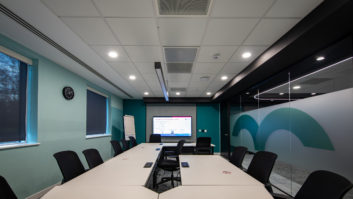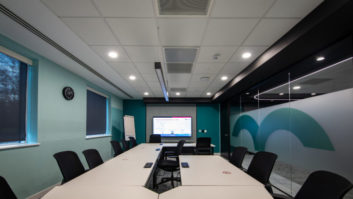
For many, technology causes jobs to be lost. There is a counter-argument, however, that it has also created jobs. Take London, for example. According to Tech City, over a quarter of its job growth is driven by technology. In the US, it’s estimated that around 10,000 new jobs are created every month in the digital industry. What’s interesting, though, is how many new job descriptions technology has generated – jobs that didn’t exist a few years ago. ‘Social media manager’ comes to mind. ‘Drone operator’ is another. ‘Data miner’ is a third.
And now, according to uxmatters.com, we can add another one: user experience (UX) designer. User experience designers are tasked with enhancing user satisfaction with a product by improving the usability, accessibility and pleasure it delivers. Don’t make the mistake, though, of confusing it with user interface (UI) design. At the risk of over-simplifying: the UI sits on top of the UX, which provides a foundation for what the user actually sees. Without good UX design, a UI can quickly become a set of random graphics.
For products destined to be used by a broad range of consumers, it’s intuitive why a good UX (topped with a good UI) is important. But what about the video communication technology used in business?
Increased productivity
“Increased productivity is the key benefit of a seamless user experience,” believes Michele Durban, director, corporate marketing at StarLeaf. “When staff aren’t wasting time setting up a conference call and working out how to use the video communications system, they can focus on the people they are meeting and the reasons they scheduled the call in the first place.
“We’ve recently worked with a customer where, when using the previous system, the CFO would insist on having a member of the IT team next to him when he was making a videoconference call, because in his experience he needed someone to help set up the call and stay there, in case something went wrong,” she says. “Moving to a StarLeaf video meeting room system with its much-improved user experience and reliability, has meant that he doesn’t need someone sitting beside him, and that that team member can get on with more important tasks.”
“It’s about hiding complexity,” according to Josh Duncan, senior director of product management at Lifesize. “You want a user to intuitively understand how the solution should work – it should just make sense. An effortless and intuitive user experience is integral to the adoption of videoconferencing solutions within an organisation. If we can continuously improve the user experience and boost user adoption of videoconferencing, then more and more of the inherent benefits – from improving productivity to increasing collaboration to reducing travel expenses – will be realised.”
In other words: if a technology designed to make you more productive actually makes you less productive, it isn’t working. If a technology is designed to facilitate communication, but no-one uses it because it’s too difficult, it isn’t working. Which raises the question: what does a good UX look and feel like?
Reducing clicks
“We’re always talking about number of clicks when it comes to user experience,” says James Keen, group marketing manager at Tripleplay. “How do you reduce the time spent on a task, how do you make it intuitive, how do you make it as painless as possible for the user? Ensuring that anybody can log in, understand the workflow and complete a task quickly is also hugely important. A platform like Tripleplay’s has grown organically over the years, which means it does an awful lot, ensuring the user knows where to go to perform a task is vital and then ensuring that the UI is fast, attractive and modern also helps.”
“You want a user to intuitively understand how the solution should work – it should just make sense” – Josh Duncan, Lifesize
“When starting a video call, the user experience should be quick and familiar – the technology itself should effectively be invisible, with a participant only having to concentrate and focus on the meeting itself,” adds Anne Marie Ginn, senior category manager at Logitech VC. “Features such as one-click join and having an intuitive remote control based on familiar consumer technologies are just a couple of ways that technology providers can go about doing this.”
“The key element for good user experience is that the technology is transparent,” says Joel Chimoindes, European commercial director at distributor Maverick AV Solutions. “By this, we mean it should feel like you’re in the room with the person if you’re on a video call. If it feels like you’re on a call, or there are interruptions and it’s not seamless, this is not a good experience.”
Simplicity is key
He has an ally in Durban. “What’s critical to the user experience of corporate video communication systems is ease of use,” she believes. “A videoconferencing platform should require no training for staff; they should be able to come into a meeting room and know intuitively how to use the system. Simplicity is key – videoconferencing systems are there to facilitate business, not get in the way, so users shouldn’t be focused on the technology, they should just be able to enter a meeting room, make or answer a call and get on with the task at hand.”
So: we have an understanding of why a good UX is important, and of some of its key characteristics. The corporate video market – and especially the unified communications and collaboration (UCC) market – has, however, become somewhat a victim of its own success. Once, the market was the preserve of relatively few providers, but it has been quick to embrace interoperability – and its growth has attracted multiple new vendors, many of whom look to provide elements of the solution rather than the complete solution. In a multi-vendor world, getting everything to play together nicely is a problem that has been solved – but at what cost to the user experience?
“It’s a difficult one,” admits Francis Williams, technical director at digital infrastructure specialist Pioneer Group. “I think we would all like a unified user experience, but this is completely dependent on vendors working together. In the modern world many vendors are trying to create their own ecosystems and collaborating with other vendors goes against these principles to some extent. So it’s more a case of whether they will or not, and what benefits that will bring them. Everyone wants their system to be the one.”







